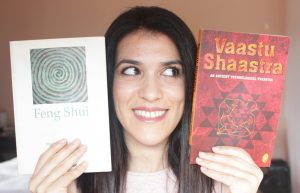Feng Shui or Vastu Shastra at Home?

Isn’t it a blessing that we may learn the ancient wisdom of many cultures in our modern world? Feng shui and Vastu shastra are two such gifts, both of which instruct us on how to regard our homes as extensions of our bodies, minds, and souls. This is a comparison chart for some of the fundamental concepts of both practices.
However, please bear in mind that one is not better than another, and we do not suggest you acceptable or mindlessly mix and match the two practices. Instead, we respectfully invite you to consider the following summary of some of the similarities and differences between feng shui and Vastu shastra. We encourage you to collaborate with one that resonates with you if you so desire.
China and India are the places where it all began.
Feng shui (which means “wind and water”) is a Chinese concept, while Vastu Shastra (which means “architecture science”) is an Indian concept. Both are big countries with civilizations that have been affected by natural disasters such as floods. The variations between the two systems are most likely due to their different geographical backgrounds. There are different terrains and natural patterns even inside China and India.
Most ancient cultures have their own ways of interacting with the world, such as how to site your home in the most beneficial way for your family’s survival, abundance, and harmony. Both Vastu shastra and feng shui were used to design revered holy sites like temples and palaces. Feng Shui’s pillars are based on Taoism, while Vastu shastra is based on the Vedas. Both look at the spaces around us to relate the universe to the people who live on the planet.
Prana and Qi
The philosophy of qi, or life force energy, is at the core of feng shui. It animates and gives life to people, animals, nature, objects, and space. Similarly, the Vastu shastra emphasizes the same concept of prana, or life force energy. While qi and prana are both related to the breath, they are not the same thing. And inanimate artefacts are enlivened by qi and prana. In these two traditions, all people, things, and spaces are interconnected and interdependent. As a result, they both see our spaces as a way to find peace and comfort as we go through life.
Nature and Her Elements are a part of me (the Five Elements)
Both feng shui and Vastu shastra use the natural world to educate our built environments. Feng shui is based on the five elements of Taoism, which are earth, metal, water, wood, and fire. Vastu shastra uses a slightly different collection of five elements from the Vedic system: water, fire, earth, air, and space. The two five-element systems have different characteristics.
The Directions and the Mandala Principle
The Sanskrit word mandala means “circle” in English. However, this does not imply that a mandala is a circle! A mandala is a geometric symbol that has a central point. Both Vastu shastra and feng shui establish mandalas with eight areas surrounding a central point. A mandala is the feng shui Bagua map. Bagua is a Chinese term that means “eight regions.” Around a central point, these mandalas radiate eight main areas. The cardinal (north, east, south, and west) and inter-cardinal directions are represented by the eight areas (northeast, south-east, south-west, and north-west). Each path has its own five-element scheme, but it also has a plethora of other definitions. The planets, deities, shades, and so on are all overlaid in Vastu shastra.
The feng shui and Vastu shastra mandalas can be superimposed on your home’s floor plan to guide how to arrange your living spaces better. However, the centre of the mandala is important in both Vastu shastra and feng shui. The Vastu Mandala is space-connected, while the feng shui core influences the entire mandala. It’s important to note that mandalas are not interchangeable, and they don’t always have the same meanings or implementations.
The significance of the bedroom, the bathroom, and the front door
Finally, both feng shui and Vastu shastra consider the significance of different styles of rooms in the house. Both pay special attention to the bedroom, kitchen, and front door of the house. However, in this case, we encourage you to investigate which system piques your interest and learn more about the design details of the practice that resonates with you. Both have a lot of meaning and insight that we can use to reconnect with our surroundings.
